Active Traction Unit (ATU) V.2
Fix Poor Posture Where It Starts - At Your Head!
The Active Traction Unit:
- May Improve Posture & Joint Health
- May Increase Mobility & Range of Motion
- May Strengthen Your Whole Body From Head To Toe
- May Help Restore & Maintain Your Secondary Curves
- May Make You Look 10-15 Years younger
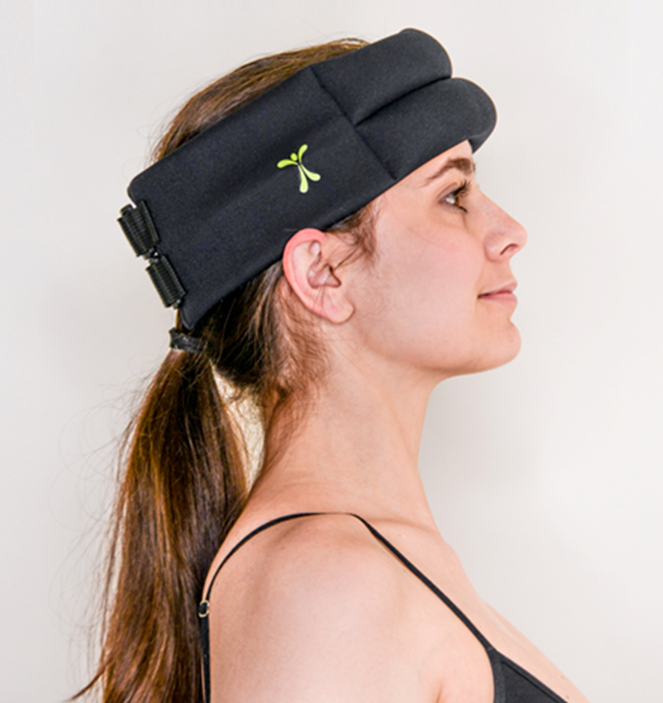

The 2 Big Flaws With Posture Training
- There is an old saying: “Where the head goes, the body follows.” The head houses all the most important sensory organs related to body positioning. Because of where these organs are located, the position of your head has a far greater effect on your posture than any other body part. And yet, most posture correction systems and training devices fail to directly address head position. The fact is, when it comes to posture the body takes its’ ques from the head – Have you ever seen someone do a flip – the head always initiates and drives the movement. The same rule applies for fixing posture! Correcting the position of your head and neck position provides the greatest “bang for your buck” and this is where posture correction needs to start. Failing to address this critical region is a recipe for failure.
- Most posture training devices available today are passive in nature. While things like training braces and posture shirts may offer some temporary relief to aching muscles, they are actually encouraging postural dysfunction. You see, muscular effort, strength and stamina are all requirements for holding your body in the proper position. The real problem is that the brace or posture shirt is doing the job that your muscles are supposed to be doing. Ironically, this ends up weakening the exact muscles in your body that probably most in need of strengthening and increasing your dependence on external support to hold yourself up. Over time, reliance on these so called “posture trainers” results in greater loss of strength and increased postural deterioration because of the disuse they promote. You simply cannot outsource the effort or strength required to hold your body up against gravity and not expect that there will be serious consequences down the line.
Most People Today Have Posture Prolapse
Your posture is a reflection of the physical demand placed on your body. Unfortunately, the modern, technologically-advanced lifestyle places very little demand on your skeletal structure and even less on your muscular system.
The result of this type of chronic disuse while being subjected to the constant pull of gravity are exactly what one would expect with this combination of factors: Widespread postural dysfunction.
Six different studies have looked into the incidence of severe postural deterioration and the average incidence from all that research shows that 70% of our population is now suffering from what I call Posture Prolapse. [1,2,3,4,5,6]
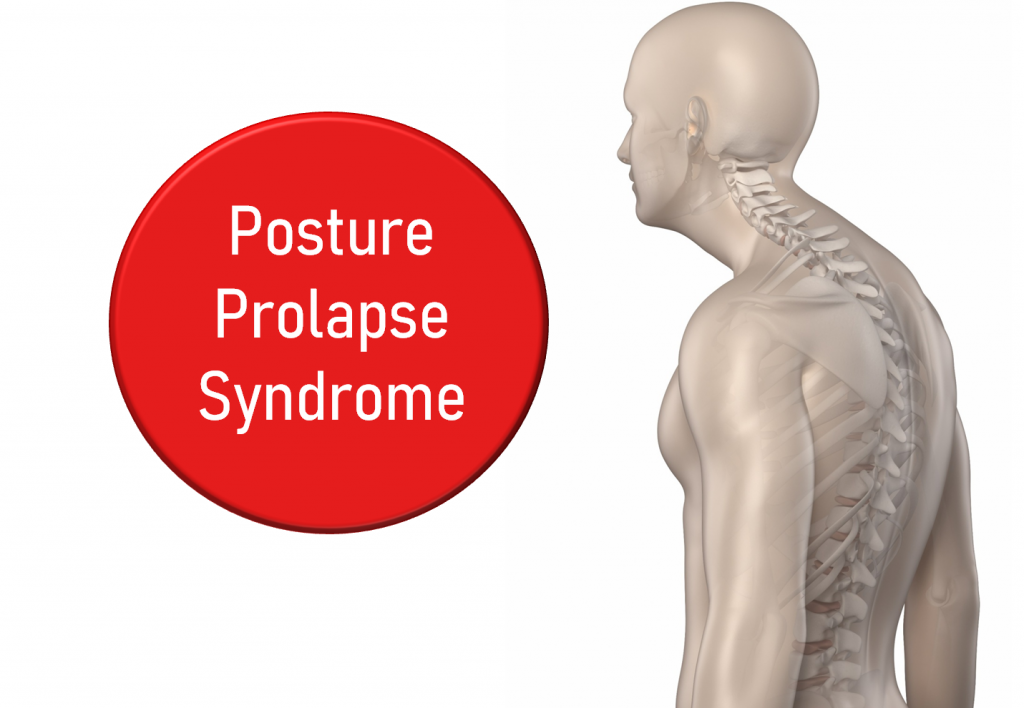
Posture Prolapse is the progressive deterioration and collapse of all the body’s secondary curves and loss of the corresponding functionality associated with those curves.
Modern Living is Altering Your Posture
One of the defining characteristics of the modern lifestyle is an abundance of sedentary, flexion-based Activities. These are activities where you are seated, your head is down, your arms are out in front of you and your hands are in a closed or grasping position. All levels of schooling and most jobs in the modern economy requires large amounts of flexion-based activity.

Many children nowadays are being raised in flexion-based activities with entertainment & learning programs on laptops, tablets and smartphones.
Between time spent online, to social media, to texting, to video games and binge TV watching – It’s too the point where almost nearly all of our waking hours are spent seated, with our heads down and our arms out in front of us and this just paves the way for postural prolapse.
An over-abundance of flexion-based activities are at the root of these degenerative structural changes. These are activities where you are usually seated, your head is down, your arms are out in front of you, the elbows are bent and the hands are in a closed position.
The problem with modern living is that everything we need to survive – things we used to be forced to engage in physical activity to get are now readily available to us with the touch of a button. We no longer have to get off the couch to secure our most basic needs. At any given moment, they are no more than arm’s distance away. So we don’t move, we stay plugged in and our heads stay down, buried in the task at hand.

The Effect of Flexion-Based Activities Compounds Over Time
Over time, those rocks begin weighing you down and wearing your body out. When you take into account that the amount of time people spend sitting is trending upward each year while the amount of physical activity is trending downward – it’s no wonder Posture Prolapse is affecting so many people nowadays. [19]

And because we are spending less and less time in extension-based activities to oppose all this time spent in flexion, these activities end up altering your physical structure.

We know that if we live in a similar way to how human beings have lived for hundreds of thousands of years – Our structure looks the way humans have looked for hundreds of thousands of years.
But, when we alter that, all bets are off.
Forward Head is A Major Sign of Dysfunction
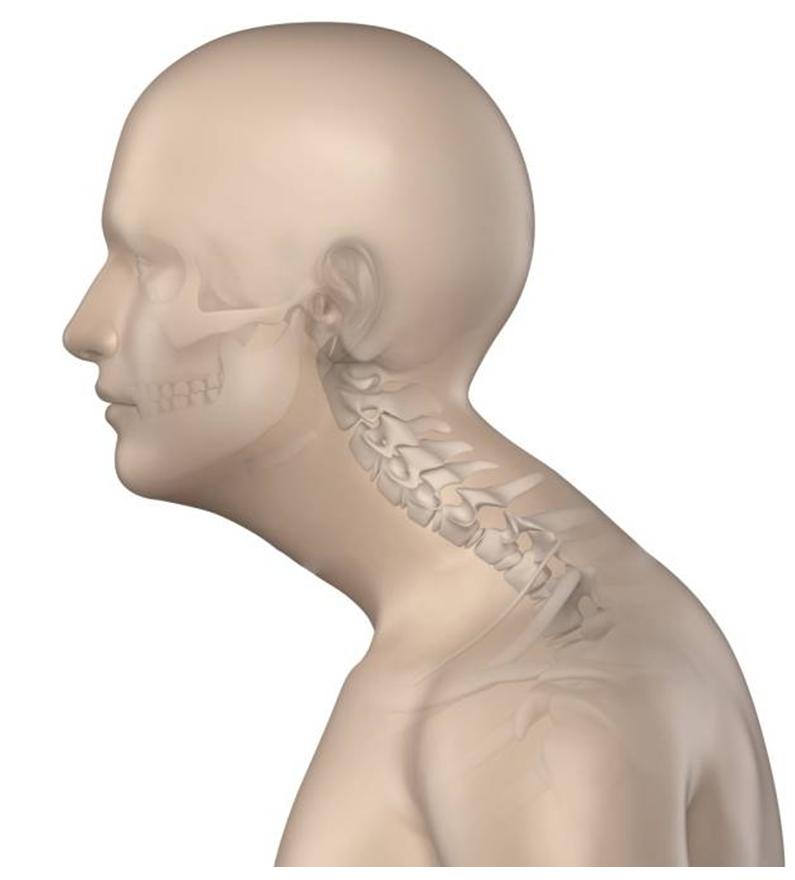
The combination of sedentary living and an abundance of flexion–based activities has devastating consequences on your whole structure. Those consequences tend to be easiest to visualize when looking at the head and neck.
- Any time you see a Forward Head Position (FHP) you know there is an tremendous burden of stress on that person’s entire body. The loss of normal head position doesn’t just affect the head and neck; it negatively impacts your whole physical structure and directly stands in the way of your body’s ability to function normally. After a FHP is when you begin to see other structural deformations begin to show up like:
- Trap Sign (Tense, over-developed, hypersensitive neck muscles)
- Rounding & internal rotation of the shoulders
- Hyperkyphosis (or “Hump Back”)
- Bunions
- Flattening of the Feet
- Clawing of the Hands
Once Posture Prolapse has been set into motion and these types of structural changes have taken place, you are likely to see functional problems like stiffness, restricted motion, difficulty breathing and fatigue begin to up.
Posture Prolpase is An Epidemic
“Just look around you, everyone has their heads down.” That’s according to the chief of spine surgery at a busy New York Clinic. [17]

I want to be clear that the types of physical changes seen with Posture Prolapse – things like Forward Head Position, Hump Back and rounded shoulders – are not the result of the normal aging process. They are the result of your daily habits compounded over time.
Here’s what happens when you bring your head down into the “classic texting position”: The load on your spine increases significantly because of the downward angle of the head. This increased load has the ability to alter both your body’s structure and its’ function.

Compounded over time, the increased load can actually pull the normal curve out of your neck. When that happens, your head will move into a forward head position. And even when you’re standing upright you don’t get a break. Holding the head out in front of the body is extremely inefficient! Every inch of forward positioning increases the workload of the muscles in the neck by a factor of 10! [18]

This is because the head actually becomes heavier and more difficult to hold up as it moves forward. In an upright position the head weighs 12 pounds but take that same head and move it forward by three inches and it weighs 42 pounds!!! That 30 pound increase has to be accounted for and its effects can be seen throughout the body.
According to world-renowned medical author Dr. Rene Calliet – “Head in forward posture can add up to 30 pounds of abnormal leverage on the cervical spine. This can pull the entire spine out of alignment.”

Pulling the spine out of alignment has been linked to the most common chronic pain conditions in the world. [7,8,9,10,11,12,13,14] Unfortunately, pain is just the beginning. Posture Prolapse slowly and quietly destroys your quality of life. Here’s a list of some of the recognized conditions that stem from Posture Prolapse:
- Impaired Breathing
- Decreased Lung Capacity
- Disc Herniations
- Chronic Muscle Strain
- Early onset Degeneration & Arthritis
- Decreased Blood Flow to Spinal Cord
- Increased TMJ & Bite Problems [15,16]
- Nerve Compression Syndromes like Carpal Tunnel & Thoracic Outlet
- Soft Tissue Pain Syndromes
Poor posture is known to directly contribute to all these problems and yet, when was the last time your doctor looked at or commented on your posture? This massive problem is completely overlooked by conventional medicine for one reason and one reason only, it’s because they have no way of effectively dealing with it.
Posture Prolapse is the underlying reason for most posture problems we see today. It’s simply not possible to achieve perfect upright posture without having your secondary curves in place.
The big question is:
What are the criteria for fixing posture?
To achieve your ideal posture, there are 4 rules you have to follow:
1) You have to correct head position first!
The head leads and the body follows. Practitioners of manual medicine, like Dr. Rene Cailliet have been saying for decades that the head is the most important part of the puzzle.
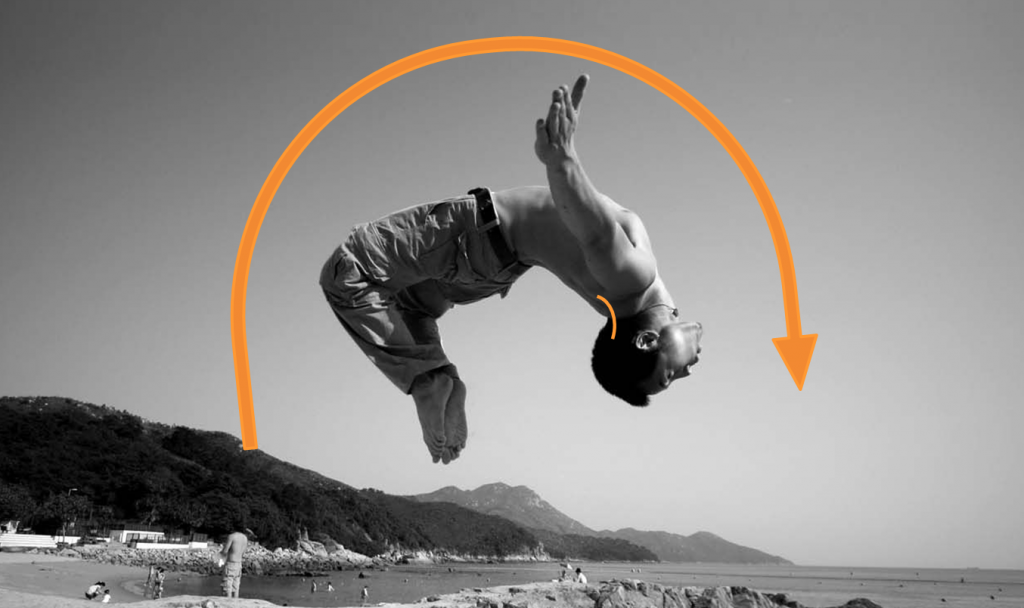
Just look at the way the head whips backward to initiate a backflip. The head leads and the body follows it. Go watch any sporting event that involves rotating or flipping the body at high speed (gymnastics and figure skating are two great examples) and you will see that these types of movements are always initiated with a head movement in the direction the athlete is moving.
Head position has a much greater effect on body posture than any other region of your body. This is because the head contains all the main sensory structures that enable you to orient yourself in space including the:
- Eyes
- Brain
- Inner Ear
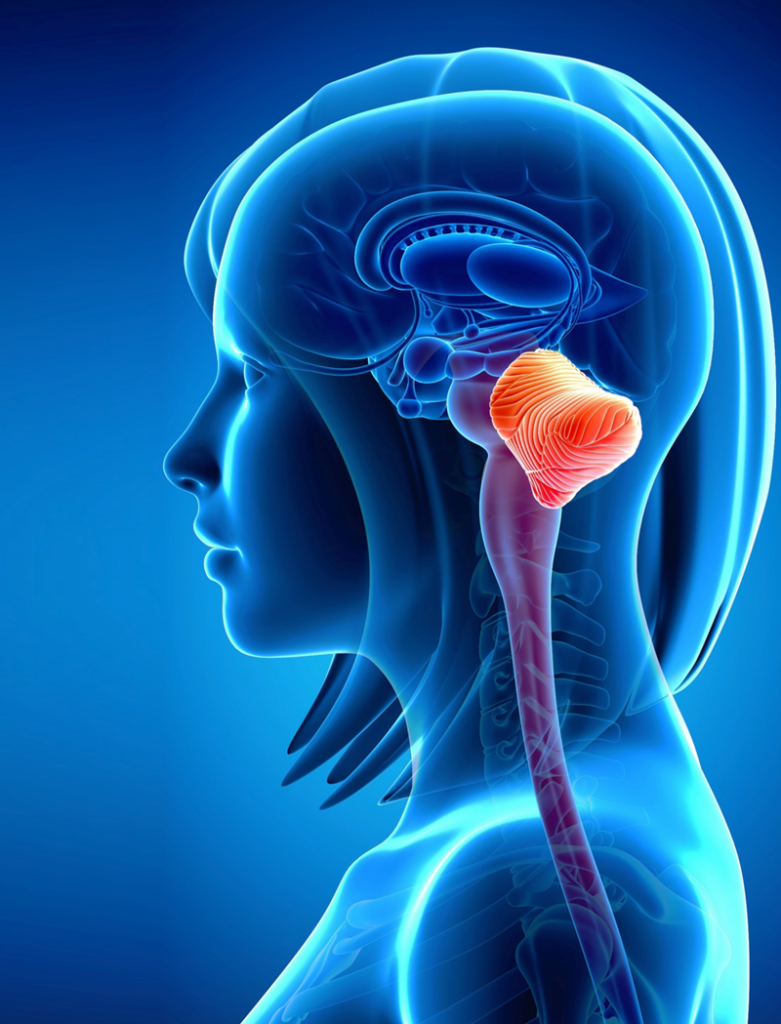
2) Posture is under subconscious, automatic control and must be trained this way.
Thankfully, it does not require any more conscious effort for you to hold your body up against gravity than it requires for you to breath. This was done by design in order to free your conscious mind up to focus on other things like interpersonal communication and finding food and shelter. The most effective means for correcting body posture creates change at the subconscious level – The same level at which the postural system operates.
3) Active Training is Required For Permanent Correction.
Posture is maintained actively – The muscles of the postural system have to be under continuous active tension to hold your head and body up against gravity. Passive interventions cannot, in and of themselves, correct a posture problem because the passive nature of this type of stimulus has very little carry-over affect to a system that functions actively. Improve the Body’s Ability to Resist Gravity – Builds Isometric Strength.
4) Isometric Strength Creates & Maintains Perfect Posture.
The muscles of the postural, uprighting system require a very specific type of strength. Unlike other muscles in the body that contract and relax constantly throughout the day in order to create motion. The muscles of the postural system have to contract and hold to keep you upright against gravity. And they have to keep doing their job and holding you up for all hours of the day – every day.
And, because these muscles operate in a completely different way than other muscles in your body, it makes perfect sense that we would need to train them in a completely different way.

A New Way To Train Your Posture
Allow me to introduce you to the Active Traction Unit, the best solution for reshaping your body and permanently correcting poor posture. The Active Traction Unit (ATU) is a simple device that loads your body in a way that subconsciously activates the muscles of your postural, uprighting system. By normalizing the position of your head, the ATU normalizes the position of your entire body and, the best part is, it builds your ability to maintain that position over time.
The ATU enables you to fix poor posture where it starts - At Your Head!

With the ATU and just 5-20 minutes minutes a day, you can counter act hours of flexion-based activities and get your head position right and pave the way for perfect posture!
References:
- P Griegel-Morris, K Larson, K Mueller-Klaus, C A Oatis. Incidence of Common Postural Abnormalities in the Cervical, Shoulder, and Thoracic Regions and Their Association With Pain in Two Age Groups of Healthy Subjects. Phys Ther. 1992 Jun;72(6):425-31
- V. Ramalingam & S. Ambusam. Prevalence and Associated Risk Factors of Forward Head Posture among University Students. Indian Journal of Public Health Research and Development10(7):775 · January 2019
- D. Anap & J.A. Mamania. Prevalence of Forward Head Posture amongst Physiotherapy Students: A Cross- sectional Study. International Journal of Education and Research in Health Sciences, October- December 2018;1(4):125-127
- Bashir, Naz & Noor. Prevalance of forward head posture among university students. Rawal Medical Journal43(2):260-262 · April 2018
- Verma et. al. Prevalence of forward head posture among 12-16 year old school going students – A cross sectional study. Applied Medical Research, 2018. Vol 4 (2)
- Vakili, Halabchi, & Z. Alizadeh. Prevalence of Common Postural Disorders Among Academic Dental Staff. Asian Journal of Sports Medicine7(2) · July 2016
- Trigger Points in the Suboccipital Muscles and Forward Head Posture in Tension-Type Headache. Headache: J. Head & Face Pain 2006 Mar; 46 (3): 454—460
- McAviney J, Schulz D, Bock R, Harrison DE, Holland B. Determining the relationship between cervical lordosis and neck complaints. J Manipulative Physiol Ther. 2005 Mar-Apr;28(3):187-93.
- Harrison DD, Harrison DE, Janik TJ, Cailliet R, Haas JW, Ferrantelli J, Holland B. Modeling of the Sagittal Cervical Spine as a Method to Discriminate Hypo-Lordosis: Results of Elliptical and Circular Modeling in 72 Asymptomatic Subjects, 52 Acute Neck Pain Subjects, and 70 Chronic Neck Pain Subjects. Spine 2004; 29:2485-2492.
- Nagasawa A1, Sakakibara T, Takahashi A. . Roentgenographic findings of the cervical spine in tension-type headache. Headache.1993 Feb;33(2):90-5
- Increased Forward Head Posture and Restricted Cervical Range of Motion in Patients with Carpal Tunnel Syndrome. Journal of Orthopaedic & Sports Physical Therapy 2009 (Sep); 39 (9): 658—664
- J Shoulder Elbow Surg.2015 Mar;24(3):446-52. The impact of faulty posture on rotator cuff tears with and without symptoms.Yamamoto A, et. al.
- LEE, WY, et al. J. of Orofacial Pain – The relationship between FHP &tempromandibular Disorders 1995
- Lennon et al. Postural and Respiratory Modulation of Autonomic Function Pain & Health. Amer J Preventative Med Vol 4. No. 1 January 1994.
- Freeman JT., Posture In The Aging and Aged Body, JAMA 1957; 165 (7), pp 843-846
Mayo Clinic Health Letter, Vol. 18, No. 3, Mar 2000.
‘Text neck’ is becoming an ‘epidemic’ and could wreck your spine. Washington Post. Nov 20, 2014
Troyanovich et al. Structural rehabilitation of the spine and posture: Rationale for treatment beyond resolution of symptoms. JMPT 1998; 21 (1).
- https://jamanetwork.com/journals/jama/fullarticle/2731178
